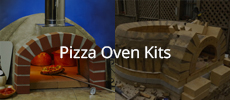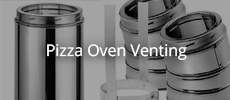After several years of thinking about it, I’ve started my build.
There’s a little over 200 acres here on the farm.
I have about 100 acres of hardwood available to fire up the oven.
The remainder acres are tillable farm ground and pasture.
The plan is to build a 42” oven.
I have a few questions before I get started on my build.
I live in west central WI, so I need footings.
This past summer, I built a stone retaining wall with crushed stone footings that go down 4’.
My concern is that if I dig conventional footings for the pizza oven too close to the stone wall, the wall will cave in.
Refer to the attachments. I cut the existing slab where the flags are so I have enough room for the piers.
After cutting out the existing concrete, I drilled five 18” diameter holes 4’ deep. One hole in the middle, and a hole at each corner.
I poured 8” of concrete in the bottom of each hole as a footing.
Then, my plan is to use 12” Sonotubes.
The next step is to form out the base slab that will be poured on top of the piers.
After which, I can lay the blocks that will support the slab for the oven.
Questions I have at this point:
1) Are 12” diameter piers enough?
2) I assume I can pour the piers and slab at the same time, tie the pier rebar into the slab rebar?
3) When building the rebar framework, would welding the rebar make it stronger than wire tie?
4) How thick should this base slab be?
5) Should I put 2” thick insulating foam board down before pouring the piers and base slab?
My search for information about this type of footings\piers to support the oven slab, didn’t reveal much.
I would greatly appreciate any suggestions, recommendations, ideas, or links that would direct me in the correct direction.
Thank you



There’s a little over 200 acres here on the farm.
I have about 100 acres of hardwood available to fire up the oven.
The remainder acres are tillable farm ground and pasture.
The plan is to build a 42” oven.
I have a few questions before I get started on my build.
I live in west central WI, so I need footings.
This past summer, I built a stone retaining wall with crushed stone footings that go down 4’.
My concern is that if I dig conventional footings for the pizza oven too close to the stone wall, the wall will cave in.
Refer to the attachments. I cut the existing slab where the flags are so I have enough room for the piers.
After cutting out the existing concrete, I drilled five 18” diameter holes 4’ deep. One hole in the middle, and a hole at each corner.
I poured 8” of concrete in the bottom of each hole as a footing.
Then, my plan is to use 12” Sonotubes.
The next step is to form out the base slab that will be poured on top of the piers.
After which, I can lay the blocks that will support the slab for the oven.
Questions I have at this point:
1) Are 12” diameter piers enough?
2) I assume I can pour the piers and slab at the same time, tie the pier rebar into the slab rebar?
3) When building the rebar framework, would welding the rebar make it stronger than wire tie?
4) How thick should this base slab be?
5) Should I put 2” thick insulating foam board down before pouring the piers and base slab?
My search for information about this type of footings\piers to support the oven slab, didn’t reveal much.
I would greatly appreciate any suggestions, recommendations, ideas, or links that would direct me in the correct direction.
Thank you






Comment